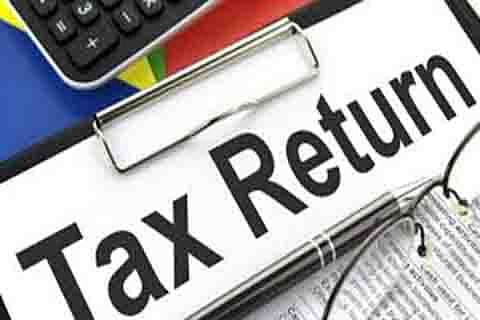Salaried employees are required to intimate their employers about the tax regime they want to opt for FY 2023-24.
Yes, salaried employees can change the tax regime at the time of filing their Income Tax Return (ITR). However, currently, they are required to intimate their employers about the tax regime they want to opt for FY 2023-24. This, according to CBDT and tax experts, is important as it will help the employers deduct TDS on salary as per the tax regime chosen by the employee.
Read More:- EPFO: Know how to get Rs 7,200 as monthly pension after retirement
“The Finance Act 2023 has made the new tax regime as default tax regime. However, individual taxpayers can switch between old and new tax regime on a year-on-year basis whereas those individual taxpayers deriving any income from business or profession, who has exercised the option of opting out of the new tax regime u/s 115BAC could exercise the option of opting back to the said new tax regime only once,” says Dr Suresh Surana, Founder, RSM India.
“It is pertinent to note that though salaried individuals can switch between old and new tax regime on a year-on-year basis, such salaried employees are required to provide intimation regarding their choice of tax regime to employers in the beginning of the financial year. Failure of the same will result in deduction of TDS u/s 192 of IT Act according to the default tax regime i.e. new tax regime u/s 115BAC of the IT Act. Nevertheless, the final choice of tax regime can be made at the time of furnishing of tax return u/s 139(1) of the IT Act,” he adds.
Read More:- Driven by XBB.1.16, India Sees Massive Jump of 10,158 New Covid Cases; Count May Rise for Next 10-12 Days
The exercise of selecting a tax regime has to be completed by salaried employees in April, failing which the employer will deduct taxes on salary as per the New Tax Regime rates.
Before selecting the tax regime, salaried employees should look at the following factors.
Concessional tax rates
The old tax regime offers an exemption limit of Rs 2.5 lakh with the highest tax slab rate of 30% applicable on income above Rs 10 lakh. Contrary to the three tax slab rates of the old tax regime, the new tax regime is wider in scope with its five tax slab rates ranging from 5% to 30% with an exemption limit up to Rs 3,00,000 and the highest tax rate of 30% is applicable on income above Rs 15 lakh.
Read More:- Gold and silver rates rise marginally. Check latest prices in your city
| Total Income (In Rs.) | Rate of Tax (Old Regime) | Total Income (In Rs.) | Rate of Tax (New Regime) |
| Upto 2,50,000 | Nil | Upto 3,00,000 | Nil |
| 2,50,001 to 5,00,000 | 5% | 3,00,001 to 6,00,000 | 5% |
| 5,00,001 to 10,00,000 | 20% | 6,00,001 to 9,00,000 | 10% |
| Above Rs. 15,00,000 | 30% | 9,00,001 to 12,00,000 | 15% |
| 12,00,001 to 15,00,000 | 20% | ||
| Above Rs. 15,00,000 | 30% |
Availability Rebate u/s 87A of IT Act
Dr Surana says that under the old tax regime, resident individuals with total income up to Rs lakh would be subjected to a Nil effective tax rate by way of claiming full rebate u/s 87A of IT Act. However, with effect from 1st April 2023 (FY 2023-24) individuals opting for New Tax Regime can claim full tax rebate u/s 87A of IT Act for total income up to Rs 7 lakh.
Read More:-Are fixed maturity plans good for your retirement planning?
Reduced Surcharge Rates
The highest tax surcharge rate has been reduced from 37% to 25% under the New Tax Regime for total income exceeding Rs 5 crore, thus reducing the effective tax rate from 42.744% to 39%.
Tax Deductions and exemptions
“There are no restrictions on claiming the benefit of tax deductions and exemptions under the old tax regime. For instance, a taxpayer with investments in tax-saving instruments, who pay premiums on life or a medical insurance policy, children’s school fee, home loan principal repayment, etc., can avail the benefit of the deduction for house rent allowance, leave travel allowance etc. in the old tax regime,” says Dr Surana.
Read More:-PM Mudra scheme clocks 8 years, banks sanction Rs 23.2 lakh crore to about 41 crore beneficiaries
“However, the new tax regime permits only certain specified deductions such as salary standard deduction of Rs. 50,000 u/s 16(ia), deduction for family pension being lower of Rs. 15,000 or 1/3rd of the pension, deduction pertaining to employer’s contribution to National Pension Scheme u/s 80CCD(2) of the IT Act, etc,” he adds.





































